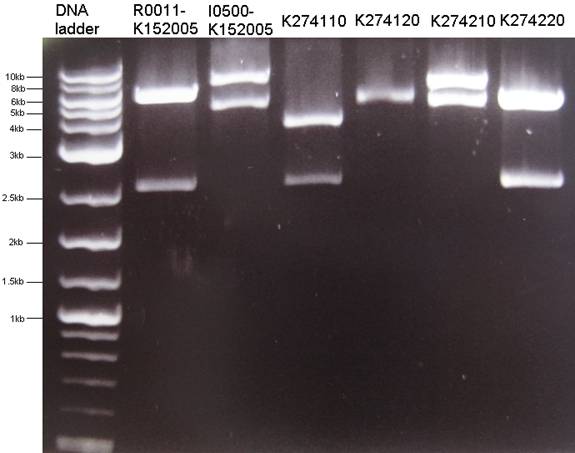Team:Cambridge/Project/CA02
From 2009.igem.org
(→Create our own devices by standard assembly) |
(→Carotenoids) |
||
| (6 intermediate revisions not shown) | |||
| Line 5: | Line 5: | ||
<!-- This is for the top grey / blue links bar !--> | <!-- This is for the top grey / blue links bar !--> | ||
{{Template:Cambridgetemplatetop}} | {{Template:Cambridgetemplatetop}} | ||
| - | [https://2009.igem.org/Team:Cambridge/Project/ | + | [https://2009.igem.org/Team:Cambridge/Project/CA01 Background] |
| - | [https://2009.igem.org/Team:Cambridge/Project/ | + | [https://2009.igem.org/Team:Cambridge/Project/CA02 Design] |
| - | [https://2009.igem.org/Team:Cambridge/Project/ | + | [https://2009.igem.org/Team:Cambridge/Project/CA03 Characterisation] |
| - | [https://2009.igem.org/Team:Cambridge/Project/ | + | [https://2009.igem.org/Team:Cambridge/Project/CA05 Datasheet] |
| - | [https://2009.igem.org/Team:Cambridge/Project/ | + | [https://2009.igem.org/Team:Cambridge/Project/CA04 Reference] |
{{Template:Cambridgetemplatebottom}} | {{Template:Cambridgetemplatebottom}} | ||
| - | == | + | == Design of Devices == |
=== Biobricks contributed by previous iGEM teams === | === Biobricks contributed by previous iGEM teams === | ||
A few iGEM teams of previous years (e.g. Edinburgh 07, Edinburgh 08, Guelph 08) conducted research in the carotenoid system. We are fortunate to have access to some of their Biobricks in the registry: | A few iGEM teams of previous years (e.g. Edinburgh 07, Edinburgh 08, Guelph 08) conducted research in the carotenoid system. We are fortunate to have access to some of their Biobricks in the registry: | ||
| Line 52: | Line 52: | ||
| - | The above enzymes all come from a | + | The above enzymes all come from a Gram negative Enterobacteria, ''Pantoea ananatis'' (GenBank: D90087.2). It is noted that analogues of these enzymes are also found in other organisms (e.g. bacteria Rhodobacter spp. and the fungus Neurospora crassa). |
| Line 62: | Line 62: | ||
* We put K152005 under control of constitutive promoter (R0011) and transformed the construct into E.coli TOP10 cells. However, the plasmids seemed unstable (the colonies streaks on solid agar plates were inconsistent in colour) and the pigment production was low. This indicated that a different strain of E.coli might be needed for pigment production. | * We put K152005 under control of constitutive promoter (R0011) and transformed the construct into E.coli TOP10 cells. However, the plasmids seemed unstable (the colonies streaks on solid agar plates were inconsistent in colour) and the pigment production was low. This indicated that a different strain of E.coli might be needed for pigment production. | ||
| - | |||
=== Create our own devices by standard assembly === | === Create our own devices by standard assembly === | ||
| Line 167: | Line 166: | ||
|} | |} | ||
| - | [[ | + | |
| + | [[Image:Cam09 gel.jpg]] | ||
<!--Do not remove the first and last lines in this page!-->{{Template:CambridgeBottom}} | <!--Do not remove the first and last lines in this page!-->{{Template:CambridgeBottom}} | ||
Latest revision as of 22:45, 21 October 2009
Categories :
Project :
-
Overview
Sensitivity Tuner
--- Characterisation
--- Modelling
Colour Generators
--- Carotenoids (Orange/Red)
--- Melanin (Brown)
--- Violacein (Purple/Green)
The Future
Safety
Notebook :
Team Logistics :
Carotenoids
Design of Devices
Biobricks contributed by previous iGEM teams
A few iGEM teams of previous years (e.g. Edinburgh 07, Edinburgh 08, Guelph 08) conducted research in the carotenoid system. We are fortunate to have access to some of their Biobricks in the registry:
The above enzymes all come from a Gram negative Enterobacteria, Pantoea ananatis (GenBank: D90087.2). It is noted that analogues of these enzymes are also found in other organisms (e.g. bacteria Rhodobacter spp. and the fungus Neurospora crassa).
During our preliminary research, we encountered a few issues:
- Originally, the registry annotation for K152005 indicated that there was no ribosome binding site before gene CrtI (i.e. “…rbs+CrtB+CrtI+rbs+CrtY…”). After clarification with Team Guelph 08, we were told that it was an error in annotation. The registry entry for K152005 has since been updated to include the ribosome binding site.
- Teams of previous years constructed various composite parts containing two or more enzymes of the synthetic pathways (e.g. CrtEBI, CrtEBIY), but they are not available on the 2009 Distribution Plates.
- We put K152005 under control of constitutive promoter (R0011) and transformed the construct into E.coli TOP10 cells. However, the plasmids seemed unstable (the colonies streaks on solid agar plates were inconsistent in colour) and the pigment production was low. This indicated that a different strain of E.coli might be needed for pigment production.
Create our own devices by standard assembly
Given the information at hand, we decided to adopt the following general strategies:
- Create a lycopene-producing device (with enzymes CrtE, CrtB and CrtI) by standard assembly of Biobricks K118014, K118006 and K118005.
- Create a β-carotene-producing device (with enzymes CrtE, CrtB, CrtI and CrtY) by standard assembly of Biobricks K118014, K118006, K118005 and K118013.
- Put the above two constructs under constitutive promoter (R0011) and arabinose-induced promoter/Pbad (I0500) and test the effect on colour production.
Scheme for standard assembly
After constructing our devices, we conducted restriction digest (cut with enzymes XbaI and PstI on Biobrick prefix and suffix, respectively) to check that the sizes of the inserts were correct. The results are as follows:
| Biobrick Number | Size of insert (kb) | Size of backbone (kb) | Note |
|---|---|---|---|
| K274100 | 3.37 | 2.08 | Digestion result not shown. |
| K274110 | 3.42 | 2.08 | |
| K274120 | 4.58 | 4.43 | Sizes of insert and backbone were similar so only one band appeared on gel. |
| K274200 | 4.53 | 2.08 | Digestion result not shown. |
| K274210 | 4.59 | 2.08 | |
| K274210 | 5.74 | 4.43 | |
| R0011-K152005* | 5.48 | 2.08 | *Used in preliminary research only. |
| I0500-K152005* | 6.62 | 4.43 | *Used in preliminary research only. |
 "
"
